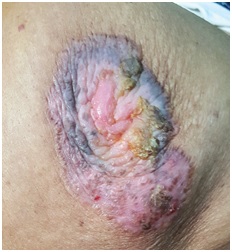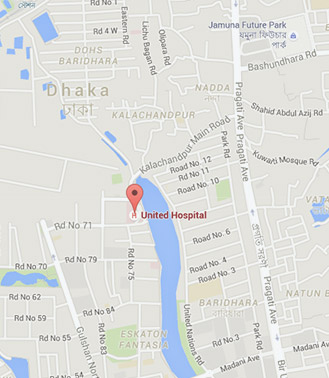Paget's disease of the breast
Prof Dr Anisur Rahman
At present time there is an increasing awareness in the society about breast cancer, which is the second most common cancer among Bangladeshi women. Paget’s disease, an extremely rare variety of breast cancer, can affect both female and male population. The danger is in the fact that the disease presents with skin surface changes in & around the nipple and hence may be ignored by the patient for a long time.
 The symptoms of Paget’s disease of the breast may include, itching, tingling or redness in the nipple and/or areola; flaking, crusty or thickened skin on or around the nipple; a flattened nipple; discharge from the nipple that may be yellowish or bloody; these are often mistaken for those of some benign skin conditions like dermatitis or eczema. Because the early symptoms of Paget disease of the breast mimic a benign skin condition and because the disease is rare, it has every risk of being misdiagnosed at first, ultimately delaying the diagnosis.
The symptoms of Paget’s disease of the breast may include, itching, tingling or redness in the nipple and/or areola; flaking, crusty or thickened skin on or around the nipple; a flattened nipple; discharge from the nipple that may be yellowish or bloody; these are often mistaken for those of some benign skin conditions like dermatitis or eczema. Because the early symptoms of Paget disease of the breast mimic a benign skin condition and because the disease is rare, it has every risk of being misdiagnosed at first, ultimately delaying the diagnosis.
Since most people with Paget’s disease of the breast also have one or more tumors inside the same breast, lump can be felt in a clinical breast exam in as many as 50 percent of patients. Only a biopsy can confirm the diagnosis; like needle biopsy, wedge biopsy or punch biopsy. The surgeon may need additional diagnostic tests such as a diagnostic mammogram, an ultrasound or a MRI to look for possible tumor spread.
Because patients with Paget disease of the breast almost always have one or more tumors inside the same breast, mastectomy with or without the removal of lymph nodes under the arm on the same side of chest (axillary lymph node dissection), is regarded as the standard surgery. However, breast-conserving surgery including removal of the nipple and areola, followed by whole breast radiation therapy, is a safe option for these patients who do not have a palpable lump in their breast and whose mammograms do not reveal a tumor.
The prognosis of the disease depends on various factors mainly delay in detection, age of the patient, spread (Stage) of the disease, whether invasive cancer is present or not, presence of other tumors in the same breast. The presence of invasive cancer in the affected breast and the spread of cancer to nearby lymph nodes are associated with reduced survival.
An 80-year old Bangladeshi lady was admitted in United Hospital with the complaints of ulceration and pain in the left breast for last one year. On examination the left nipple and areola were found to have been completely replaced by a large ulcer which had even spread beyond the areola. There were blood stained discharge and multiple palpable nodes in the axilla of the same side. A clinical diagnosis of breast cancer (Paget’s disease) was made which was subsequently confirmed by biopsy. Mastectomy with axillary clearance under general anaesthesia was performed; this was well tolerated by the patient and she had an uneventful recovery. Being discharged on 7th post operative day, she was followed up on 9th and 11th day after surgery, when the skin sutures were removed. She has been referred to the Oncologist for further necessary treatment and follow-up. My experience shows that Paget’s disease of the breast, although rare, is not uncommon in Bangladesh.


 The symptoms of Paget’s disease of the breast may include, itching, tingling or redness in the nipple and/or areola; flaking, crusty or thickened skin on or around the nipple; a flattened nipple; discharge from the nipple that may be yellowish or bloody; these are often mistaken for those of some benign skin conditions like dermatitis or eczema. Because the early symptoms of Paget disease of the breast mimic a benign skin condition and because the disease is rare, it has every risk of being misdiagnosed at first, ultimately delaying the diagnosis.
The symptoms of Paget’s disease of the breast may include, itching, tingling or redness in the nipple and/or areola; flaking, crusty or thickened skin on or around the nipple; a flattened nipple; discharge from the nipple that may be yellowish or bloody; these are often mistaken for those of some benign skin conditions like dermatitis or eczema. Because the early symptoms of Paget disease of the breast mimic a benign skin condition and because the disease is rare, it has every risk of being misdiagnosed at first, ultimately delaying the diagnosis.
